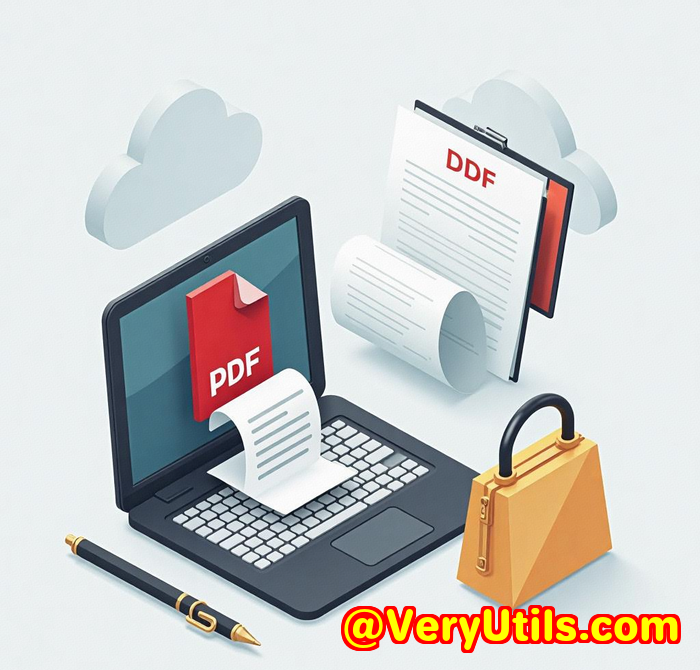How to Use VeryPDF JavaScript PDF Annotator to Create Dynamic User Experiences in PDF Editing Applications
Meta Description:
Ditch clunky PDF editors. Discover how I used VeryPDF's JavaScript PDF Annotator to build seamless PDF annotation experiences in the browser.
Every time I had to add comment functionality to PDFs in a web app, I hit a wall.
Plugins.
Compatibility issues.
Horrible UX.

One time, I spent two full days debugging a PDF viewer plugin that just wouldn't load on Safari. And don't even get me started on trying to support mobile devices it was a nightmare.
If you're a developer building PDF editing features into your application, you've probably felt this pain.
You want users to draw, comment, highlight, and collaborate all inside the browser without them downloading anything.
That's when I found VeryPDF JavaScript PDF Annotator.
It was a total shift. A fully HTML5-based PDF annotator I could drop straight into my app, no plugins, no drama.
And the best part? It came with the source code license, so I could tweak it however I wanted.
The tool that made it all easier
So here's what it is:
VeryPDF JavaScript PDF Annotator Source Code License gives you full access to a browser-based annotation tool that works across 50+ file formats, not just PDFs.
It runs on Windows, Mac, Linux, iOS, Android, pretty much anywhere with a browser.
If you're a dev building web apps for finance, legal, education, or internal corporate tools this is for you.
Need real-time collaboration? Covered.
Want to burn annotations into final exports? Easy.
Need to annotate Office docs or CAD files too? You got it.
What actually makes it stand out?
Let me break down what got me hooked:
Feature 1: Real-time annotation browser only
No installs.
Just open a file in the browser and boom you can:
-
Add text, highlights, strikeouts
-
Use freehand drawing, shapes, comments
-
Layer annotations from multiple users without overwriting each other's input
I was building an internal tool for a legal client and they were using tablets to review contracts.
With this, I had paralegals highlighting clauses and adding comments on-the-go, straight from iPads.
Feature 2: Works with your own backend
This one sealed the deal.
I needed annotation data stored on our own servers (compliance stuff), and VeryPDF lets you hook into your own REST API.
You can:
-
Save annotations separately
-
Burn them into the document when needed
-
Share or email annotated files
-
Export with full formatting preserved
Feature 3: Customise everything
Fonts, colours, toolbar layout, annotation styles all tweakable.
I even added my client's logo and colour scheme, so the annotator looked like part of their core app.
This was impossible with most off-the-shelf tools I tried. They were locked down or offered zero control.
Use cases I've seen it shine in
Here's where I've personally used it or seen teams win with it:
-
Legal tech: Lawyers highlighting clauses in contracts, adding side comments, burning annotations into final PDFs.
-
Education: Teachers grading student submissions, leaving inline feedback.
-
Real estate: Agents marking up property documents and sharing annotated versions with clients.
-
Engineering: Annotating CAD files and images directly in the browser.
-
Finance teams: Reviewing and commenting on Excel reports embedded as PDFs.
Why I ditched other tools for this
I tried a few big-name PDF SDKs before this and while they looked flashy, here's what went wrong:
-
Some required plugins deal breaker for mobile.
-
Others couldn't handle anything outside basic PDFs.
-
A few offered no source code access so forget about customisation.
VeryPDF gave me control.
I could inspect, debug, modify, and extend everything.
No waiting for support or workarounds.
And since it's cross-platform and browser-agnostic, I didn't have to build different flows for Chrome vs. Safari vs. Edge.
Final thoughts who needs this?
If you're building anything that touches documents, especially if users need to:
-
Review
-
Comment
-
Edit
-
Approve
...this is a no-brainer.
I'd highly recommend this to any dev team that needs to embed document annotation without reinventing the wheel.
You get:
-
A full JavaScript-based PDF annotation viewer
-
Support for Office files, images, CAD, and more
-
REST API integration
-
Full UI and functionality customisation
-
Cross-platform support
Click here to try it out for yourself
Custom Development Services by VeryPDF
Need something even more specific?
VeryPDF offers custom development for all kinds of PDF and document workflows.
Whether you're working on Linux, Windows, macOS, or need something cloud-based, they can help.
Their dev stack includes Python, PHP, C++, C#, .NET, HTML5, and more.
From custom printer drivers to OCR tools, from barcode systems to font tech if it touches documents or print pipelines, they've likely built it.
You can even get custom tools for things like:
-
Capturing print jobs as PDFs
-
Monitoring file access
-
Building advanced annotation workflows
-
Parsing scanned forms or tables
-
Embedding secure digital signatures
If you're thinking "we need this, but slightly different," just reach out to their support:
http://support.verypdf.com/
FAQs
1. Can I integrate this annotator into an existing web app?
Yes it's designed to be embedded and works with most frontend frameworks. You can connect it to your own backend via REST API.
2. Does it support mobile devices?
Absolutely. It runs in the browser on iOS and Android, no installs needed.
3. Can annotations be exported or burned into the PDF?
Yes. You can export PDFs with annotations or burn them in to create final versions.
4. What file types are supported?
Over 50, including PDF, DOCX, XLSX, PPTX, DWG, and most image formats like PNG, JPG, and TIFF.
5. Is the source code customisable?
Yes that's one of the biggest perks. With the source code license, you can fully customise the tool's behaviour and appearance.
Tags
-
JavaScript PDF annotator
-
HTML5 PDF editor
-
Web-based document annotation
-
Cross-platform PDF tool
-
PDF annotation API